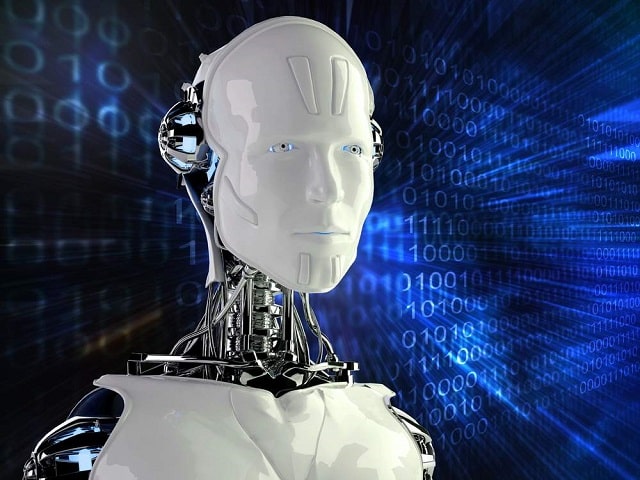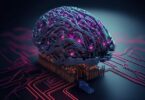Reactive Machines: An Introduction
Understanding the Future of AI
Artificial intelligence (AI) has come a long way since its inception. From rule-based systems that followed a set of predefined instructions to machine learning algorithms that learn from data, AI has become increasingly sophisticated over time. One of the most exciting developments in AI is the concept of reactive machines. In this blog post, we’ll take a closer look at what reactive machines are. How do they work? And what are their potential implications for the future of AI?
What are Reactive Machines?
Reactive machines are a type of AI system. That is designed to react to changes in their environment. They are not like traditional rule-based systems that follow a set of predetermined rules. They learn and adapt to new situations in real time.
And they use sensors and algorithms to make decisions. And they adjust their behaviour on the fly. With this feature, they respond to changes in the environment. And they perform tasks more flexibly and efficiently.
The major advantages of reactive machines are their ability to sense. They respond according to the changes in the environment. For example, if an obstacle appears in their path, they use sensors to detect it and adjust their behaviour accordingly. The sensors allow them to complete their task even in the face of unexpected obstacles. This flexibility makes them well-suited to so many applications.
Reactive machines are a new and innovative type of technology. They are rapidly gaining popularity in various industries. These machines are designed to be highly responsive to their environment. And they make decisions and take actions based on real-time data. It allows them to operate more efficiently and effectively. And this feature allows them greater autonomy than traditional machines.
Definition of Reactive Machines:
Reactive machines are computer-controlled devices. Those are highly responsive to changes in their environment. They are not like traditional machines. Traditional machines are programmed to perform a specific set of tasks. Reactive machines are designed to make decisions. And they take actions based on real-time data. They operate in a more flexible and adaptable way. And they respond to changing conditions and situations in real time.
These reactive machines process vast amounts of data in real-time. They are equipped with powerful sensors and algorithms. Powerful sensors and algorithms allow them to gather and process information about their environment. They use this information to make decisions and immediately take action. This means that they operate in a highly autonomous way. And they respond to changing conditions and situations much more quickly and effectively than traditional machines.
Applications of Reactive Machines:
Reactive machines are used in the industries such as manufacturing, logistics, healthcare, and retail. They are particularly useful in situations where real-time data and responsiveness are critical. They are very useful in logistics and supply chain management. In logistics and supply chain management, reactive machines control and optimize the flow of goods and minimize waste.
Another area where they are being used is in healthcare. They are being used to monitor patients. And they respond to changes in their health status in real time. For example, they are used to monitor vital signs. And they alert medical staff in real time if a patient’s condition deteriorates. They can also automate routine tasks such as taking measurements and administering medication. This frees up staff time, and the staff can focus on more complex and critical tasks.
In manufacturing, they are used to optimize production processes. Also, it is used to improve quality control. They monitor production lines in real time. And they identify and respond to issues as they arise. It reduces waste. And it improves efficiency. The manufacturers can produce higher-quality products.
They are employed in Industrial Distribution. Industrial distribution in AI technology refers to the widespread adoption and integration of artificial intelligence solutions across various industrial sectors. It encompasses the deployment of AI-powered applications and systems to enhance efficiency. The industrial distribution of AI is characterized by incorporating smart sensors, predictive analytics, and autonomous systems, leading to improved productivity, reduced costs, and enhanced overall performance across diverse industrial landscapes.
Advantages of Reactive Machines:
There are many advantages to reactive machines. They respond quickly and effectively to changes in their environment. It operates in a highly autonomous way. And they make decisions. Further, they take actions based on real-time data. It leads to significant improvements in the efficiency, effectiveness, and productivity of reactive machines. And also it reduces waste and higher-quality products.
They process vast amounts of data in real time. It means that they make more informed decisions. And they make more effective actions than traditional machines. Their programming and pre-defined tasks often limit them.
Finally, they are also highly flexible and adaptable. They respond to different conditions and situations. And they easily adapted to changing needs and requirements. They are used in different industries and applications.
Reactive machines are a new and innovative type of technology. They are rapidly gaining popularity in various industries. And they are designed to be highly responsive to their environment. They make decisions. And they take actions based on real-time data. They operate more efficiently and effectively. And they function with greater autonomy than traditional machines. And they respond to changing conditions and situations much more quickly and effectively. They have powerful sensors and algorithms. And they have real-time data processing capabilities. With these tools, reactive machines revolutionize.
The Future of Robotics:
Since its inception, robotics has come a long way. And the latest development in robotics is the advent of reactive machines. These Machines are robots designed to respond to real-time situations and environments. They adapt and adjust their behaviour in response to changes. These machines are a new breed of robots. They revolutionize our lives and work. It changes the landscape of manufacturing, healthcare, and many other industries.
The difference between traditional robots and reactive machines is to sense and respond to changes in their environment. A traditional robot is programmed to perform a certain task. But if an obstacle appears in its path, it is unable to adjust its behaviour and complete the task. In contrast, a reactive machine uses sensors to detect the obstacle and adjust its behaviour accordingly. The sensors allow it to complete the task even in the face of unexpected obstacles.
Benefits of Reactive Machines:
Reactive machines offer many advantages over traditional robots. The advantages are increased efficiency, flexibility, and safety.
Efficiency:
Reactive machines are designed to operate in real-time environments. They make decisions and adjust their behaviour on the fly. Therefore, they perform tasks faster and more efficiently than traditional robots. Traditional robots require programming changes or shutdowns to adapt to new situations.
Flexibility:
They respond to changing conditions. And they adapt their behaviour accordingly. They are well-suited to many applications. Flexibility makes them a versatile tool for businesses and industries. They are used in multiple settings and environments.
Safety:
These machines are designed to respond to their environment. Their decisions are based on real-time data. Therefore, they perform tasks more safely and securely. And they reduce the risk of accidents or errors.
Applications of Reactive Machines:
Reactive machines have many applications. The applications are from manufacturing, construction, and healthcare to consumer products.
Some of the most promising applications of reactive machines include:
Manufacturing:
They are well-suited to manufacturing environments. And, they are used to automate repetitive and dangerous tasks. They also respond to changes in the production process. And they adjust their behaviour as and when needed for optimal performance.
Construction:
These machines are used in construction environments. They perform tasks such as excavation, grading, and material handling. And they respond to changes in the environment, making them well-suited to the unpredictable and often dangerous conditions found on construction sites.
Healthcare:
They are used in healthcare settings. Further, they assist with tasks such as patient care, rehabilitation, and surgical procedures. They respond to changes in the patient’s condition, making them well-suited to the demanding and often unpredictable conditions found in healthcare environments.
Consumer Products:
These machines are used in various consumer products. They vary from home automation systems to wearable devices. They respond to changes in the environment. This makes them well-suited to various applications. The applications using it are health and fitness, entertainment, and more.
Reactive machines represent the next generation of robotics, offering increased efficiency, flexibility, and safety compared to traditional robots. The field of robotics has been advancing rapidly in recent years. And one of the latest developments is the introduction of reactive machines. These robots are designed to react and adapt to real-time situations. They suit many applications. The applications where it is employed are manufacturing, construction, healthcare, and consumer products. Reactive machines change our lives and work.
Most Prominent and Groundbreaking Technologies That Are Shaping the Future:
The latest technology trends have a profound impact on our lives, work, and communication with each other. Technological advancements are happening at an unprecedented rate. It is very challenging to keep up with all the changes. However, some prominent and groundbreaking technologies are shaping the future.
Artificial Intelligence (AI) and Machine Learning (ML):
AI and ML are closely related technologies. They are transforming the computer’s processing and understanding of information. AI refers to the creation of intelligent machines. They perform tasks that typically require human intelligence, such as recognizing patterns, making decisions, and solving problems. Conversely, ML involves feeding data into algorithms and systems so that they improve their performance over time. Today, AI and ML are used in industries such as healthcare, finance, retail, and transportation.
5G Network:
5G is the fifth generation of wireless networks. It represents a major leap forward in terms of speed and reliability. With 5G, users do faster downloads and uploads at higher speeds and lower latency. And there can be more consistent connections, even in crowded and congested areas. 5G network speed enables new use cases. They are such as real-time video streaming, virtual reality, and the Internet of Things (IoT).
Internet of Things (IoT):
IoT refers to the network of physical devices, vehicles, home appliances, and other items embedded with electronics, software, sensors, and connectivity which enable these objects to connect and exchange data. IoT brings about a transformation in our lives and work. It has the potential to streamline processes, improve efficiency, and increase safety.
Blockchain Technology:
Blockchain is a decentralized digital ledger. And that records transactions across a network of computers. It is associated with cryptocurrencies like Bitcoin. But it has broader applications in industries such as finance, healthcare, and supply chain management. The benefits of blockchain are increased security, transparency, and immutability.
Virtual and Augmented Reality (VR and AR):
VR and AR are technologies that allow users to experience a simulated or augmented version of the real world. VR is used to create fully immersive virtual environments. Whereas AR overlays digital information onto the physical world. These technologies have various applications, including gaming, education, and healthcare.
Robotic Process Automation (RPA):
RPA is software that automates routine, repetitive tasks typically performed by humans. The goal of RPA is to increase efficiency and reduce the risk of errors. It will free up human employees to focus on more valuable tasks. RPA is used across multiple industries.
Quantum Computing:
Quantum computing is a new form of computing that uses quantum mechanics to process information. Unlike traditional computing, Quantum computing solves certain problems faster and more efficiently. It has the potential to revolutionize fields such as cryptography, drug discovery, and optimization.
Drones:
Drones are also known as unmanned aerial vehicles (UAVs). They are aircraft that are controlled remotely or fly autonomously. Drones are used in many applications, such as military operations, delivery services, aerial photography, and inspection. In the coming years, drones are expected to play an even larger role in industries such as agriculture, construction, and emergency response.
These are just a few of the many technologies that are shaping the future. As technology continues to evolve and change, it is important to stay informed and understand how these advancements can impact our lives and the world around us. Whether we are working to improve our businesses, create new products, or simply communicate with each other, technology will play a critical role in
Understanding the Basics of Reactive Machines:
Reactive machines represent a significant shift in the field of artificial intelligence, unlike traditional AI systems that follow predetermined rules. Reactive machines are designed to react to changes in their environment in real time. They can learn and adapt to new situations without being explicitly programmed to do so. In this post, we will explore the basics of reactive machines and what sets them apart from other AI systems.
What are Reactive Machines?
Reactive machines are AI systems that respond to changes in their environment without relying on prior knowledge or assumptions. They make decisions based on the current state of their surroundings. And they do not require a pre-programmed set of rules to operate. Reactive machines are typically used in situations where there is a lot of uncertainty. Self-driving cars or robotics are good examples of them.
How Do Reactive Machines Work?
Reactive machines work by constantly sensing and analyzing their environment. They use this information to make decisions in real-time based on a set of predefined behaviours. These behaviours help the machine respond to different situations and adapt to new challenges. Unlike traditional AI systems, reactive machines do not have a central decision-making process. Instead, they rely on distributed intelligence. Each component of the machine is working together to achieve a goal.
Examples of Reactive Machines in Action:
They are used in many applications. These applications are self-driving cars, robotics, and industrial automation. Self-driving cars, for example, use reactive machines to sense their surroundings and make decisions in real time. They detect obstacles, pedestrians, and other vehicles and adjust their speed and direction accordingly. Similarly, robots in manufacturing plants use reactive machines to detect and respond to changes in their environment. They ensure that they perform their tasks accurately and efficiently.
Advantages and Limitations of Reactive Machines:
The main advantage of them is to operate in uncertain and dynamic environments. They adapt to new situations quickly. And they make decisions in real time without relying on prior knowledge or assumptions. However, they also have some limitations. They are typically designed to perform specific tasks. And they may be unable to handle complex situations requiring more advanced decision-making processes.
Implications for the Future of AI:
They represent a significant shift in the field of artificial intelligence. As these machines become more advanced, they may eventually replace traditional rule-based systems. And they have become the standard for AI applications. However, there are concerns about the potential risks associated with reactive machines. The risks include the loss of control over the decision-making process and the impact on employment.
Reactive machines represent an exciting development in the field of artificial intelligence. These machines can potentially revolutionize various industries and improve our daily lives. However, as with any new technology, some potential risks and concerns must be addressed. We need to understand the basics of reactive machines. So that we better prepare ourselves for the future of AI. And we ensure that these machines are developed and used responsibly.
Reactive Machines and Traditional AI Systems- A Comparison:
| Reactive Machines | Traditional AI Systems | |
| Operation | React to changes in the environment in real-time | Follow predetermined rules or algorithms |
| Decision-making | Decisions based on the current state of surroundings, no prior knowledge needed | Decisions based on pre-programmed rules or algorithms |
| Learning | Learn and adapt to new situations in real-time | Learn from historical data |
| Uncertainty | Designed to operate in uncertain and dynamic environments | May struggle to operate in uncertain or novel environments |
| Applications | Self-driving cars, robotics, industrial automation | Chess-playing AI, fraud detection, medical diagnosis |
| Limitations | May struggle with complex decision-making processes | Limited to pre-programmed rules and algorithms |
| Future | May eventually replace traditional AI systems | Will likely continue to be used for specific applications |
It’s worth noting that there are differences between reactive machines and traditional AI systems. They are not necessarily mutually exclusive. Some AI systems may use both reactive and traditional approaches to make decisions and perform tasks.
Examples of Reactive Machines in Action:
They are used in various applications and industries. They are from self-driving cars to robotics and industrial automation.
Here are some examples of reactive machines in action:
Self-driving Cars:
Self-driving cars use these machines to sense their surroundings and make real-time decisions. They detect obstacles, pedestrians, and other vehicles and adjust their speed and direction accordingly. Reactive machines are critical in helping self-driving cars to make decisions. That keeps passengers and others safe while navigating complex traffic situations.
Robotics:
Robots in manufacturing plants use these machines to detect and respond to changes in their environment. That ensures that they perform their tasks accurately and efficiently. For example, a robot may use a reactive machine to detect the position of a part on an assembly line and adjust its movements accordingly.
Healthcare:
Reactive machines are used in healthcare to improve patient outcomes. For instance, a reactive machine can be used to monitor patient vitals in real-time and alert medical professionals if there are any concerning changes. Therefore, medical professionals to intervene quickly and prevent potential complications.
Smart Home Devices:
Also, they are used in smart home devices such as voice assistants, thermostats, and lighting systems. These devices use reactive machines to sense their environment and adjust settings based on user preferences. For instance, a thermostat may use a reactive machine to adjust the temperature based on the current weather conditions and the user’s schedule.
Industrial Automation:
They are used in industrial automation to monitor and control complex systems. For example, a reactive machine can be used to detect changes in temperature, humidity, or other environmental factors. And the machines adjust the production process accordingly. This helps improve efficiency, reduce waste, and ensure product quality.
Overall, they are an essential component of many advanced technological systems. And they have the potential to revolutionize many industries. These examples illustrate how these machines can be used to make real-time decisions. Those are based on the current state of their environment. That can lead to improved efficiency and safety. And it can increase the overall performance of various applications.
Advantages and Limitations of Reactive Machines:
Advantages:
Reactive machines offer several advantages over traditional AI systems. One of the main advantages of these machines is to make real-time decisions. That is based on the current state of their environment. With this, it quickly reacts to changes. And they adjust their behaviour accordingly. They are critical in applications such as self-driving cars or robotics. These machines detect obstacles. And they sense their surroundings and make decisions in real time. And they perform tasks more efficiently and safely with that feature.
Another advantage of them is that they do not require prior knowledge or historical data to make decisions. This makes them well-suited for situations where historical data may not be available or may not be reliable. They make decisions based solely on their current environment without needing to rely on pre-programmed rules or algorithms. This feature is particularly useful in applications where the environment is constantly changing or unpredictable.
Furthermore, reactive machines are designed to operate in uncertain and dynamic environments. They adapt to new situations and learn from their experiences. That leads to improve performance over time. This adaptability is particularly valuable in applications such as healthcare or industrial automation, where conditions may change rapidly and unpredictably.
Limitations:
While reactive machines offer several advantages, they also have some limitations. One limitation of them is that they struggle with complex decision-making processes. They are designed to make decisions based on the current state of their environment. Therefore that could limit situations where a more nuanced approach is required. For example, a reactive machine may struggle to make decisions based on social or emotional cues. That could be critical in applications such as healthcare or customer service.
Another limitation is that they are not well-suited for applications that require long-term planning or strategic thinking. Reactive machines are designed to make decisions based on the current state of their environment. They make decisions without necessarily considering the long-term consequences of those decisions. This is a disadvantage in applications such as finance or business, where long-term planning is critical.
Finally, they may have a limited ability to handle novel situations or unexpected events. These machines are designed to adapt to new situations. They may struggle to handle situations that are completely outside of their experience. In these cases, reactive machines may not be able to make effective decisions. That could be a significant limitation in applications such as healthcare or emergency response.
They offer several advantages over traditional AI systems. They also have some limitations. It is important to consider the strengths and weaknesses of reactive machines when deciding whether to use them in a particular application.
Implications of Reactive Machines for the Future of AI:
Reactive machines represent a significant step forward in the development of artificial intelligence. They are with important implications for the future of the field. One of the most significant implications of reactive machines is that they offer a new approach to AI. That is focused on real-time decision-making and adaptability. This approach stands in contrast to traditional AI systems. It often relies on pre-programmed rules or historical data to make decisions. They emphasize real-time decision-making and adaptability. They have the potential to revolutionize a lot of industries. The industries are manufacturing, healthcare, transportation, and finance.
More Implications:
Another implication of reactive machines is that they lead to the development of more complex and sophisticated AI systems in the future. Reactive machines are designed to operate in dynamic and unpredictable environments. That means that they must be able to learn from their experiences and adapt to new situations. This adaptability could form the basis for the development of more advanced AI systems. That could eventually lead to the creation of machines that are capable of true artificial general intelligence.
However, the development of they also raises some important ethical and societal questions. One concern is that they could lead to job displacement in various industries. It may happen as machines become increasingly capable of performing tasks that were previously performed by humans. Besides, it could have significant economic and social implications, particularly for low-skilled or manual labour jobs.
Another concern is that they could be used to perpetuate existing societal biases or inequalities. As we already discussed, they are designed to learn from their experiences. They inadvertently reinforce biases that exist in the data or the environment in which they are operating. It could result in unintended consequences, such as discriminatory decision-making or the perpetuation of existing inequalities.
The development of them represents an important step forward in the field of AI. It is with significant implications for the future of the field. While reactive machines offer important advantages, they raise important ethical and societal questions. That must be carefully considered as technology continues to evolve. By addressing these concerns, we should ensure that reactive machines are developed and deployed to maximise their potential benefits while minimizing their potential risks.
Ethics and Accountability of Reactive Machines:
Reactive machines represent a significant advancement in the field of artificial intelligence. But they also raise important ethical and accountability issues. These machines have become more prevalent in society. It is essential to consider their potential impact. And ensure that they are designed and deployed responsibly and ethically.
One ethical concern surrounding these machines is the potential for unintended consequences. They are designed to make decisions based on their current environment. But they may not always consider the broader implications of their actions. This could lead to unintended harm. Particularly unintended harm may happen in situations where human lives are at stake. For example, a self-driving car that prioritizes the safety of its passengers over pedestrians may inadvertently cause harm to innocent bystanders.
Another ethical issue is the potential for bias and discrimination in decision-making. They learn from their environment and experiences. That means that they may inadvertently reinforce existing biases or inequalities. It could result in discriminatory decision-making, particularly in healthcare, finance, and criminal justice.
Accountability of Ethical Concerns:
These ethical concerns need to be addressed. It is essential to ensure that they are designed with a focus on transparency and accountability. It could involve creating standards for the design and deployment of reactive machines as well as establishing clear guidelines for how decisions are made and evaluated.
Another important aspect is its accountability. Accountability is ensuring that there is a clear chain of responsibility for the actions of reactive machines. This one could involve establishing clear lines of communication between the developers, operators, and end-users of these machines. And also need to create mechanisms for reporting and addressing issues that arise.
The ethical and accountability implications of reactive machines are significant. And these must be carefully considered as these machines become more prevalent in society. These concerns need to be addressed while designing reactive machines with a focus on transparency, accountability, and ethical considerations. We must ensure that these machines are developed and deployed in a way that maximizes their potential benefits while minimizing their potential risks.
The Promise of Reactive Machines in the Age of AI:
Reactive machines represent a significant promise in the age of artificial intelligence. It offers a new approach to AI that is focused on real-time decision-making and adaptability. As these machines continue to evolve, they have the potential to revolutionize a lot of industries. And it changes the way we interact with technology.
One of the most significant promises of reactive machines is to operate in dynamic and unpredictable environments. Traditional AI systems often struggle in these environments as they rely on pre-programmed rules or historical data to make decisions. Reactive machines, conversely, are designed to operate in real time and adapt to new situations as they arise. It makes them particularly well-suited for applications in areas such as healthcare, transportation, and finance. In those applications, decisions must be quickly made in response to rapidly changing circumstances.
Another promise of them is to learn from their past experiences and improve over time. These machines interact with their environment and receive feedback. They continually refine their decision-making processes and become more effective at their tasks. It will have significant implications for industries such as manufacturing, where machines could become more efficient and productive as they learn from their experiences.
They also have the potential to improve safety and security in a range of applications. For example, in the field of transportation, self-driving cars are equipped with reactive machine technology. That could help to reduce accidents and fatalities on the road. In the field of cybersecurity, they could be used to detect and respond to threats in real time. That will help to prevent cyberattacks before they occur.
Conclusion:
However, realizing the promise of reactive machines also requires careful consideration of ethical and societal implications. These machines will become more prevalent in society. It is essential to ensure that they are designed and deployed responsibly and ethically. It should be designed with a focus on transparency, accountability, and fairness.
In conclusion, the promise of reactive machines in the age of AI is significant. It offers a new approach to AI that is focused on real-time decision-making and adaptability. There are important ethical and societal considerations to be taken into account. The potential benefits of them are vast. And they could have a transformative impact on all major industries and applications.
Frequently Asked Questions:
What are Type 1 Reactive Machines?
This machine is the most basic type of unsupervised AI. And, it doesn’t have the concept of the past or any memory of what has happened before. Further, it has the ability neither to form memories nor to use past experiences to inform current decisions. It does not have memory; therefore, it cannot use its past experiences to influence its present decisions makings.
They can only react to the existing situation. And they cannot do any functions other than what they are programmed for. The reactive machines will always behave in a way that they are programmed in all situations, times, or places. There won’t be any growth in their work. And there is a chance for stagnation in recurring actions and behaviours.
Characteristics:
It lacks imagination. And, It has zero concepts of the past.Further, it exists in the ultimate present moment, only reacting to the world as it is in that precise moment. Therefore, These machines react to the current scenarios, and they cannot rely on upon taught or recollect from the past and make decisions in the present.
They will do the specific tasks for which it is programmed, and they cannot do beyond those.And, they do not interact, and therefore, they respond to identical situations, in the same way, every time they encounter a similar situation. They cannot improve with practice.
Intelligence Involves:
This type of intelligence involves the machine perceiving the present situation directly and acting on what it sees. It doesn’t rely on the internal concept of the world. And, these machines are very limited, and they are specialized to do particular duties. These machines cannot interactively participate with the environment.
These machines behave the same way whenever they encounter a similar situation. They are trustworthy. These machines won’t be bored, sad, or disinterested. Since these machines do not have memory-based functionality, they cannot learn. And they cannot use the previously gained experience in the present actions. They are used to respond automatically to a limited set of inputs.







